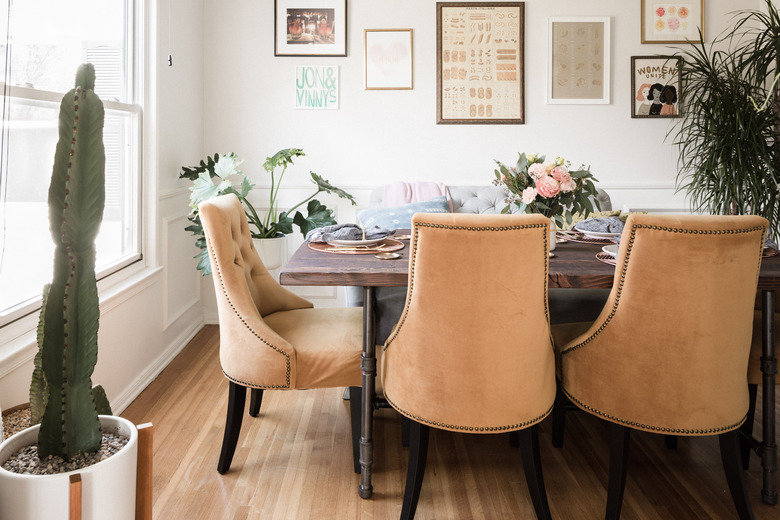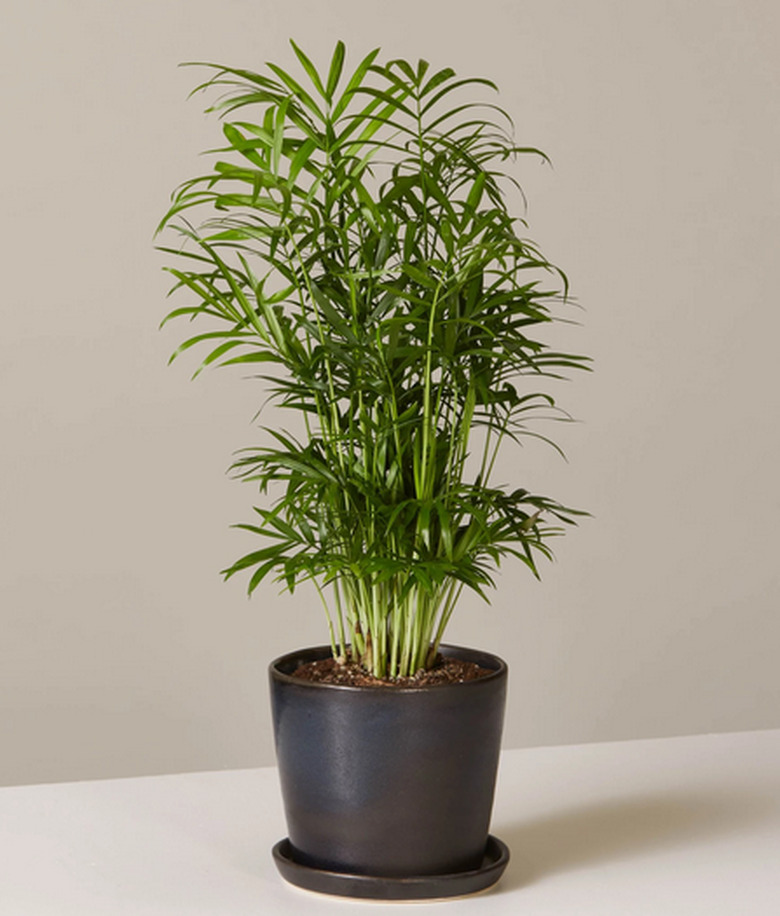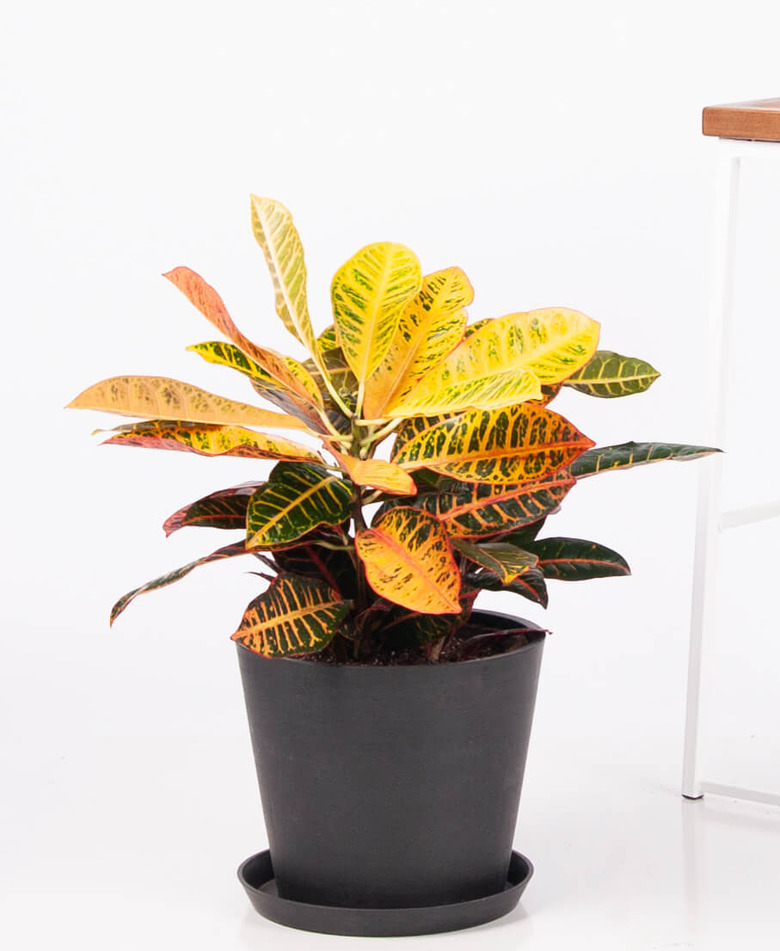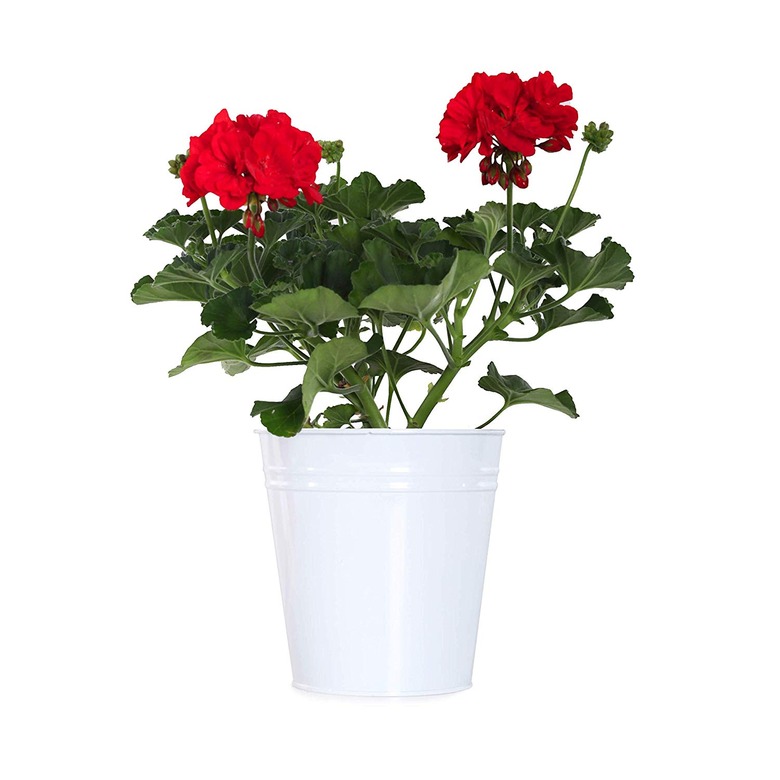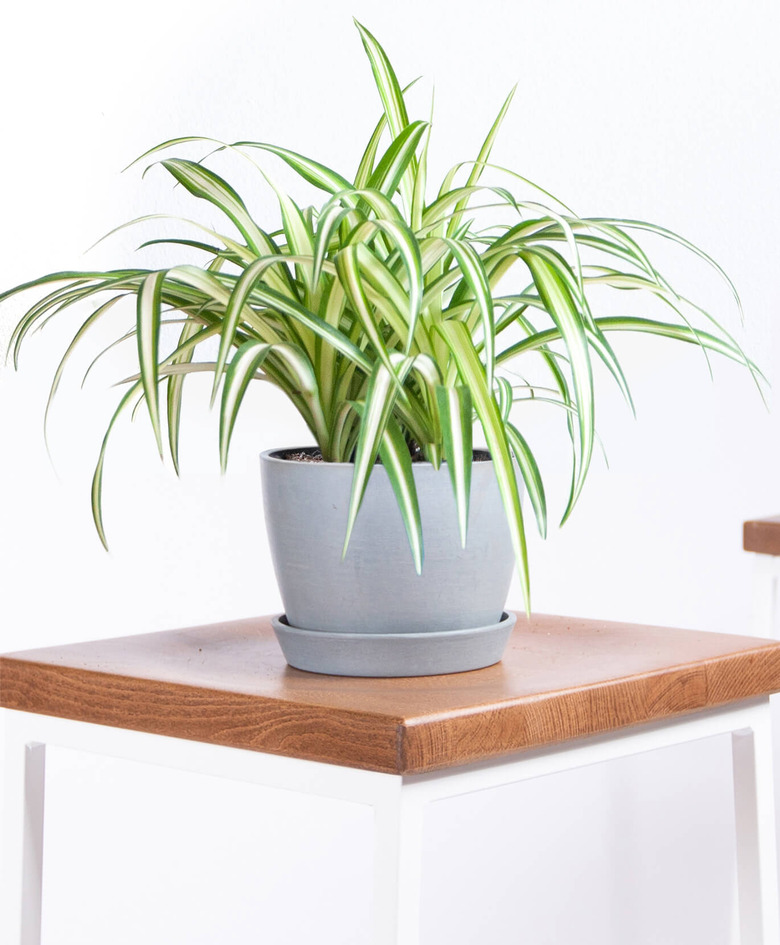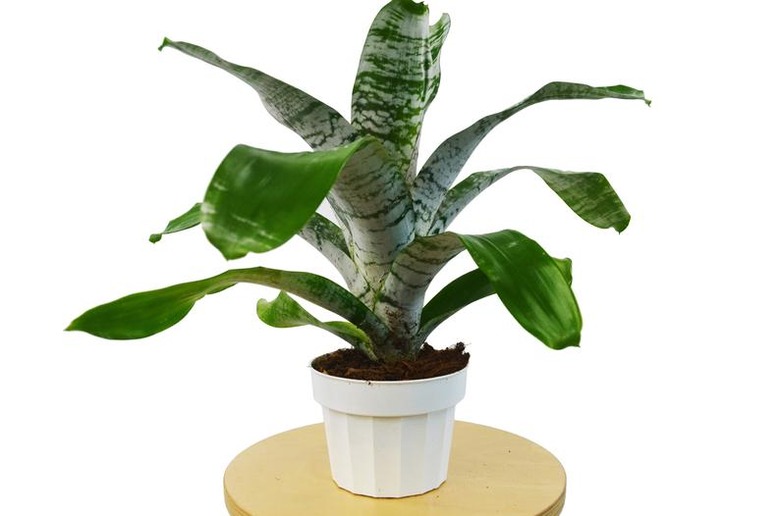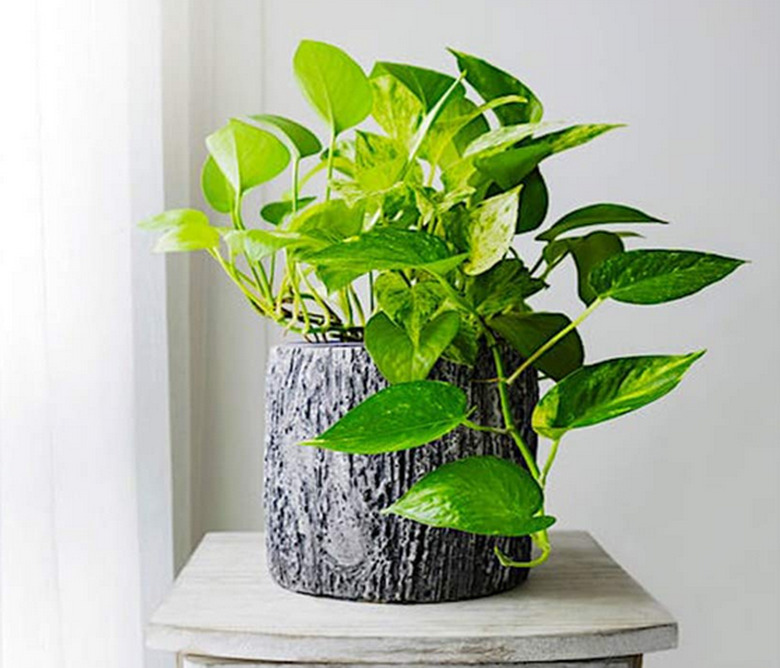Choose These Indoor Plants For Your Dining Room
We may receive a commission on purchases made from links.
Traditionally, the only plants that made it into the dining room, other than the veggies in the salad, were cut flowers on the table. But the "plants-belong-outside" mentality has changed, and for good reason. Indoor plants improve your mental and physical health, and they are just plain happy-making, filling a room with the bright green hope of growing leaves and the serenity of nature.
So how about adding some dining room plants? This spot where we gather daily with family and friends will feel even more welcoming with a few plants. Here are our top choices for sunny and shady areas.
SUNNY DINING ROOMS
Parlor Palm
Parlor palm (Chamaedorea elegans) is a charming, vibrant foliage plant perfect for a dining area. Several specimens are usually grouped together in a pot to form a lush explosion of green fronds, creating the look of old Victorian elegance.
Most potted parlor palms in commerce are just a couple of feet tall and fit anywhere. But they grow to 6 feet tall and 3 feet wide, making an impressive display in a spot where the plant's handsome foliage is highlighted.
Plant care: Situate parlor palms in a window that gets bright, indirect light. Use well-draining potting soil. Water only when the top inch of soil is dry and keep the palm away from cold drafts. No fertilizer please!
Get the look: Parlor Palm
Croton
You may agree that flowering houseplants are overrated when you first encounter croton (Codiaeum variegatum), with its compellingly lovely leaves. Place this beauty near a sunny window, where it will surely be a focal point in the dining room.
This is a foliage plant that can make anyone a believer, with huge leaves splashed with bright colors. Typically the foliage starts out green with yellow markings, but in direct sun it develops brilliant splotches of pink, yellow, orange, and scarlet.
Plant care: Crotons love warmth, so keep the dining room thermometer above 55 degrees. Use well-draining soil and keep it moist, watering whenever the soil surface feels dry. Sit the pot on a pebble tray to improve humidity.
Get the look: Croton plant
Geraniums
Many houseplants enjoy some sun, but only a handful like drenching in sunlight for hours. Geraniums (Geranium spp.) lead the sun-loving pack.
You probably know geraniums as attractive outdoor plants with plenty of foliage and bright scarlet or fuchsia pink flowers. But these plants actually work well as indoor decor if you have sun and lots of it. Some are terrific in hanging baskets while other look bright and joyful in a container.
Plant care: Place the pot in a south- or west-facing window. Use soil high in organic content and excellent drainage. Water well whenever the soil is dry to 4 inches.
Get the look: Geraniums
LOW-LIGHT DINING ROOMS
Spider Plants
You don't want spiders in the dining room, but spider plants (Chlorophytum comosum) are a different matter. These low-maintenance plants form gorgeous mounds of narrow leaves with white stripes down the center. Spider plants also take top marks in NASA's list of air-toxin removers.
A mature plant's leaves form a graceful skirt in hanging baskets, but they are especially cool when they produce offspring. They grow long, bare shoots that develop little spidery plantlets at their tips, called "spiderettes," which dangle down from the mother plant like spiders from a web.
Plant care: Super tolerant, spider plants accept low-light conditions without blinking an eye. Provide well-draining soil and occasional water, but no fertilizer is needed.
Get the look: Spider plant
Silver Vase Plant
The silver vase plant (Aechmea fasciata) is a bromeliad that will wow everyone who enters your dining room. These beauties have wide, strappy leaves and stunning flowering bracts that last for months on end.
Buy a plant that is already flowering to immediately enjoy the show as showy pink bracts unfurl under the tiny deep purple flowers. Before the flowers eventually die, they produce offshoots that are essentially new plants that will continue the cycle.
Plant care: These Aechmeas grow just fine in moderate shade with moist, well-draining soil. While they are air plants, they keep themselves stable by developing roots. Keep water in the plant's central cup, changing it out frequently.
Get the look: Silver vase plant
Golden Pothos
If your dining area is truly low-light, you may hope to find a miracle plant that can grow in extremely shady conditions. Here is one: golden pothos (Epipremnum aureum). These amazing plants thrive in light shade, medium shade, and even a dark closet. And they can go for long periods without water.
The foliage on this wonder plant is lush. It's a trailing vine with big, heart-shaped leaves, splotched with white, yellow, or paler hues of green. This is an excellent plant for low-light dining areas and will definitely add to the atmosphere. Pothos are high on NASA's the list of air-cleaning plants.
Plant care: While golden pothos will tolerate drought and stay alive, they are happier and healthier with regular irrigation. Don't water until the soil has dried out to a couple of inches. Feed occasionally with balanced water-soluble fertilizer.
Get the look: Golden Pothos
